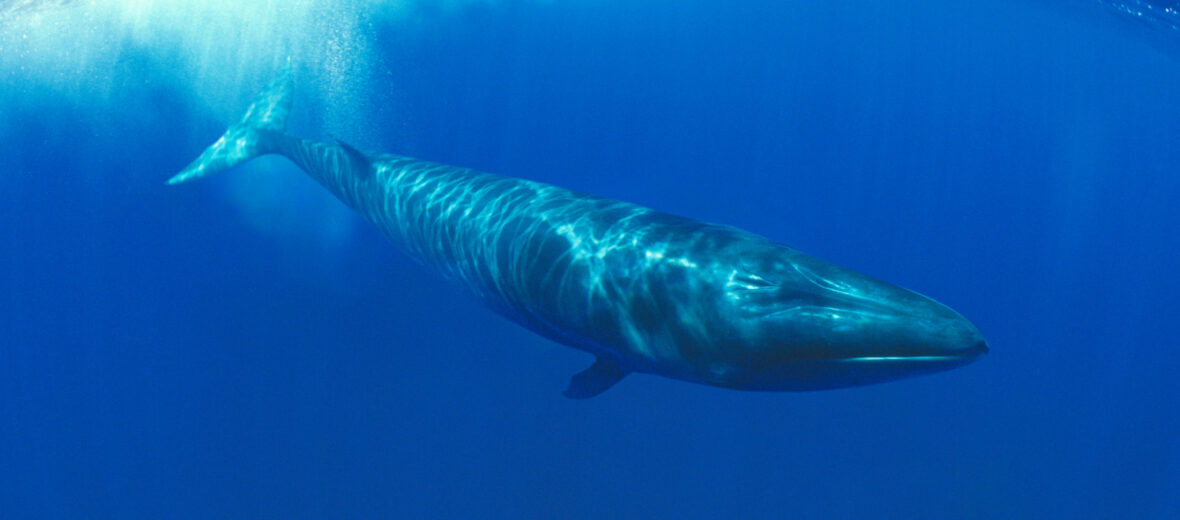
Belonging to the family of whales known as baleen whales, the sei whale can be found in oceans all over the world except tropical and polar regions. There are 2 known subspecies of sei whales; the northern and the southern. Sadly, due to intensive hunting of these magnificent beasts, their population has dropped 70%! They are a protected species now, but their numbers continue to remain low due to ship strike (collisions with ships), water pollution, noise pollution, and lack of food. These whales are listed as Endangered by the IUCN.
First the Stats…
Scientific name: Balaenoptera borealis
Weight: Up to 44,000 lbs.
Length: Up to 60 feet
Lifespan: Up to 75 years
Now on to the Facts!
1.) Their name comes from the Norwegian word seihval; “sei” relates to the coalfish located in the northern waters, and “hval” which means whale.
2.) Sei whales utilize 300 – 400 baleen plates (on each side of their mouth) to filter their food, which consists of copepods, zooplankton, fish, and krill. Each plate is up to 19 inches long.
3.) Sans humans, their primary predators are orcas.
4.) These giants are the third largest known whale in the world. After the blue whale and the fin whale.
5.) The sei whale is typically solitary, but can travel in pods of up to 6 individuals.
But wait, there’s more on the sei whale!
6.) This whale is able to consume up to 2,000 lbs. of food a day!
7.) They can hold their breath for up to 20 minutes.
Did you know…?
The sei whale is among the fastest of all cetaceans. Able to reach speed bursts of up to 30 mph!
8.) Females give birth to a single calf every 2 – 3 years.
9.) A sei whale calf can reach up to 15 feet long and weigh in excess of 1,000 lbs.
10.) During the 19th and 20th centuries, when whaling was more abundant, it is estimated that over 300,000 sei whales were killed.
But wait, there’s still more on the sei whale!
11.) Males are polygynous (have breeding rights to multiple females).
12.) Like other known baleen whales, the sei whale has 2 blow holes not 1.
Did you know…?
The American naturalist, Roy Chapman Andrews, compares sei whales to cheetahs, since they can reach great speeds, but tire easily.
13.) Their scientific name Balaenoptera borealis means “winged whale” & “northern.”
14.) Growl-like low-frequency calls are used to communicate with one another.
15.) Ectoparasites and epibiotics are rare on sei whales, but do sometimes occur.
Now a Short Sei Whale Video!
Also, check out the Critter Science YouTube channel. Videos added frequently!
Want to suggest a critter for me to write about? Let me know here.



